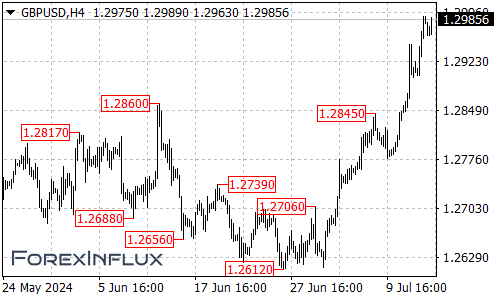The British pound has been showing strength against the US dollar recently. Let’s break down the main factors driving this trend and explore what it could mean for the future.
- Interest Rate Differentials
Interest rate differences are a crucial driver for currency values, and currently, they’re favoring the pound. Here’s why:
- The UK’s real interest rate stands at 3.25%, compared to the US at 2.5%.
- This higher real interest rate in the UK is pushing the pound higher against the dollar.
- The gap might widen further: There’s a 90% chance the Federal Reserve will cut rates in September, with markets expecting over two cuts this year.
- In contrast, there’s only a 57% chance of a rate cut by the Bank of England (BoE) in August, with less than two cuts expected this year.
- Economic Growth and Inflation Forecasts
The UK’s growth outlook has improved recently:
- May saw 0.4% GDP growth, surpassing the expected 0.2%.
- This growth was driven by increased construction output and a slight uptick in the services index.
- The BoE might revise growth forecasts upward in their August meeting, making a rate cut less likely.
Inflation forecasts for the UK might also be adjusted:
- Current projections are 2% CPI for this year and 2.6% for next year.
- However, April’s living wage increase could impact core inflation later this year.
- A potential new Labour government might extend living wage increases further.
The BoE has good reasons to wait for the new government’s first budget before cutting rates. This could support the pound, especially considering that high interest rates don’t seem to be hindering the UK’s recovery from last year’s recession.
- Technical Outlook
If the GBP/USD pair can break above 1.30 in the coming days, it might climb to 1.40 – a level not seen since 2021.

In conclusion, the combination of favorable interest rate differentials, improving economic indicators, and potential policy shifts are creating a positive environment for the pound. However, investors should remain vigilant and monitor upcoming economic data and policy decisions, as the currency market can be influenced by a wide range of factors.